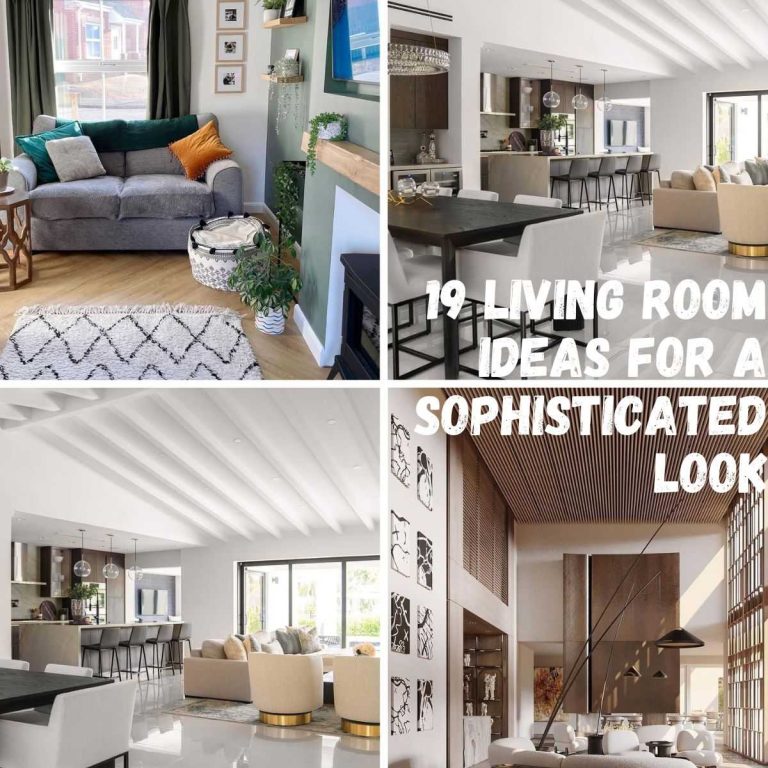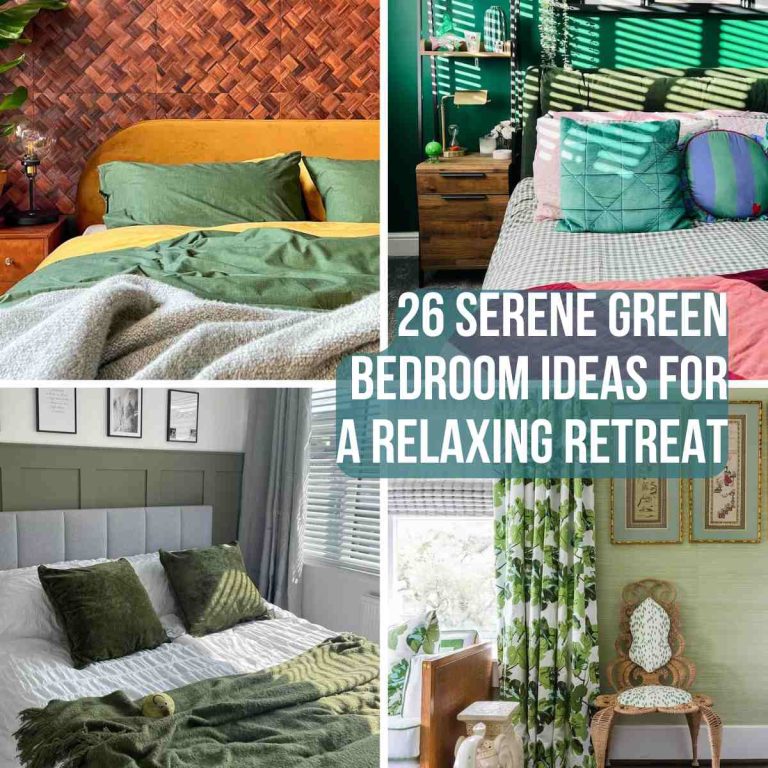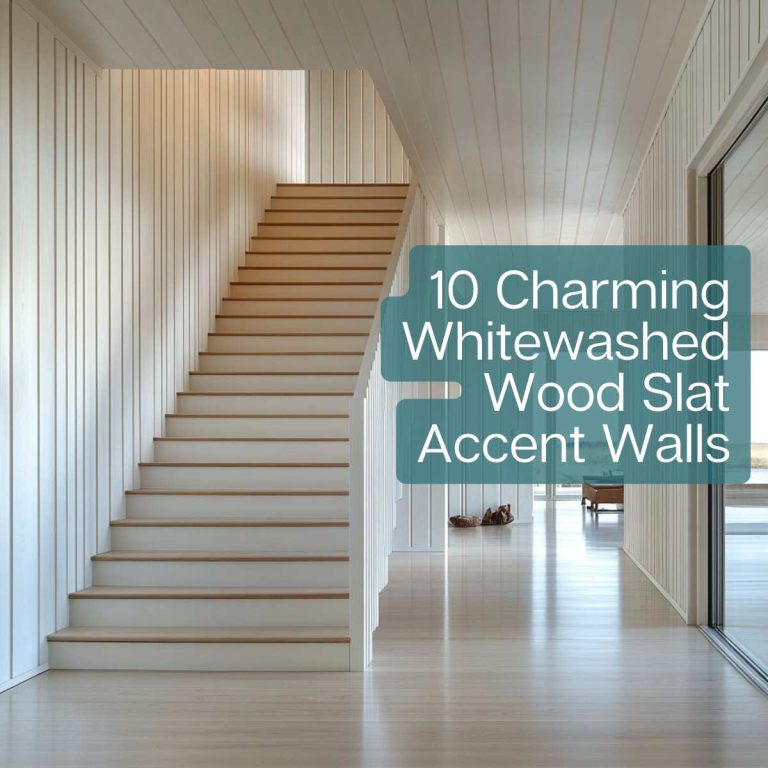Monochrome Small Bathroom Ideas for High-Impact Style
Designing a small bathroom can be a challenge, but embracing a monochrome palette unlocks possibilities that are both bold and beautifully cohesive. The stark contrast of black and white or the layered subtlety of grays can add sophistication, structure, and even the illusion of more space. This timeless approach focuses the eye, allows for creative texture play, and ensures a bathroom feels intentional, not incidental.
Whether you’re working with a compact powder room or a cozy main bath, this guide dives into the creative power of monochrome design—providing ideas, layout tips, product advice, and examples to help you transform your small space into a showstopper.
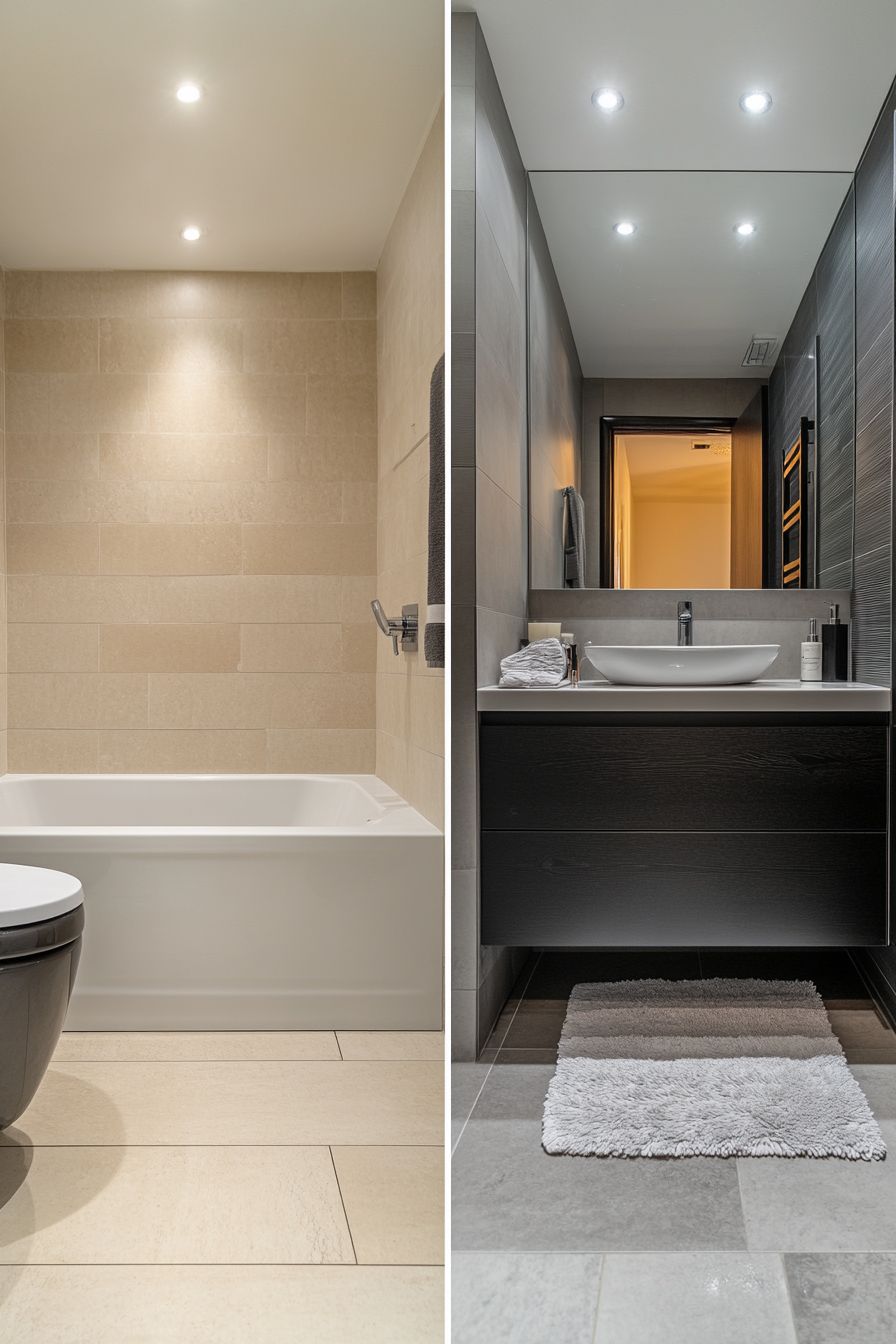
The monochrome aesthetic: a design philosophy
Monochrome design is the art of using a single color—or variations of it—to create a clean, unified space. In bathrooms, this doesn’t mean flat or boring; rather, it’s an opportunity to focus on form, texture, contrast, and light. It’s not about using just white or black—it’s about choosing one tone and expressing it through various shades, materials, and finishes.
Psychologically, black exudes confidence and modernity, white evokes cleanliness and simplicity, and gray brings calm neutrality. Together, they offer a perfect triad for small bathroom design: high-impact style with thoughtful restraint.
Planning your monochrome bathroom
Before diving into tile samples or fixtures, take a moment to evaluate the space. Start with lighting—does the room receive any natural light? Is it limited to ceiling fixtures? This will influence your color dominance.
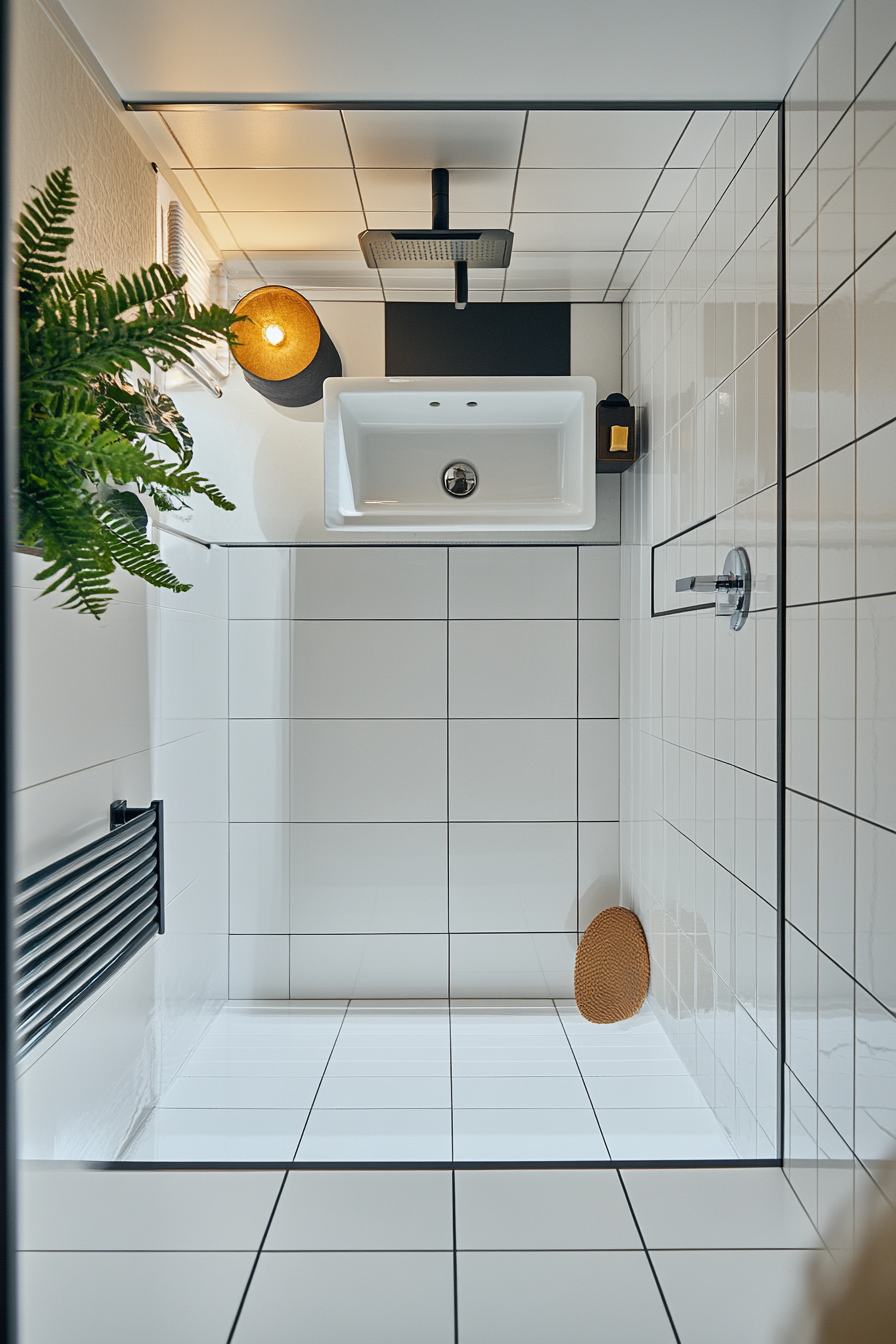
Also, consider orientation. North-facing bathrooms may benefit from warmer grays and more reflective surfaces, while south-facing ones can handle darker tones more easily. Choosing a base tone—white, black, or gray—sets the foundation. From there, layer in subtle variations for visual interest while maintaining harmony.
White-dominant monochrome bathrooms
White is a favorite for small bathrooms because it reflects light and visually enlarges the space. But to avoid the room feeling sterile, texture is key. Think glossy white subway tiles, matte white porcelain floors, and frosted glass dividers.
To add contrast, integrate black or graphite hardware—faucets, light switches, cabinet pulls—or opt for a dramatic black-framed mirror. The balance between crisp white and grounded accents gives the bathroom structure and personality.
Black-dominant monochrome bathrooms
A black-themed bathroom in a small space sounds counterintuitive, but with the right approach, it can feel like a boutique hotel. Matte black walls, slate tile, or black-painted shiplap instantly create depth and drama.
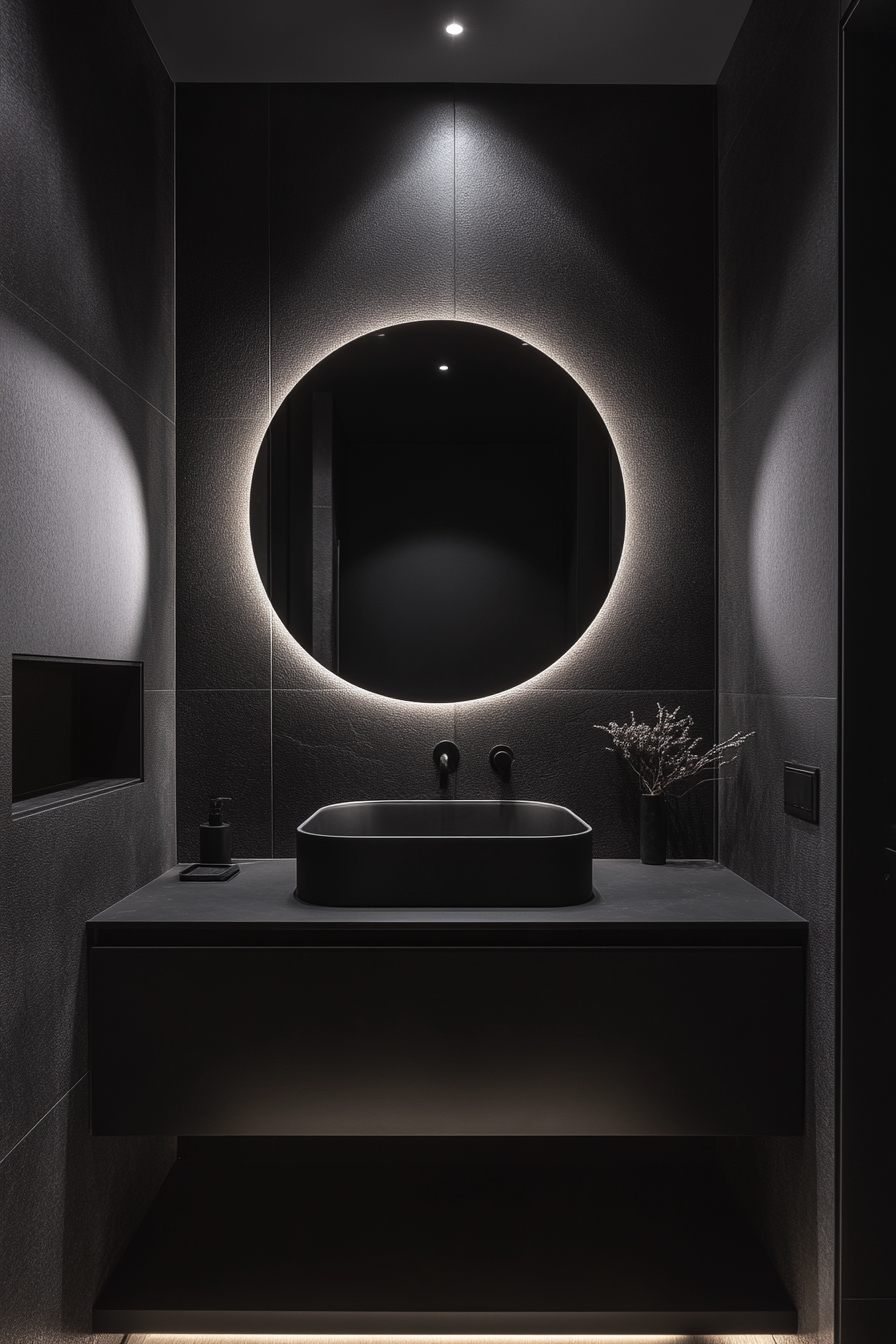
To prevent the space from feeling enclosed, use strategic lighting: under-cabinet LEDs, backlit mirrors, and skylights where possible. Contrast can come from white vessel sinks, chrome fixtures, or pale concrete floors.
It’s about creating a moody, cocoon-like vibe that feels luxurious rather than limiting.
Gray-centric monochrome concepts
Gray is the ultimate middle ground. It offers the cleanliness of white and the strength of black while maintaining a soft, understated look. Light dove gray walls paired with deeper charcoal floor tiles create a layered, soothing space.
Use brushed nickel or matte black hardware to maintain cohesion. Incorporating gray cabinetry with integrated handles and minimal seams supports a sleek, monochrome vision without harsh contrasts.
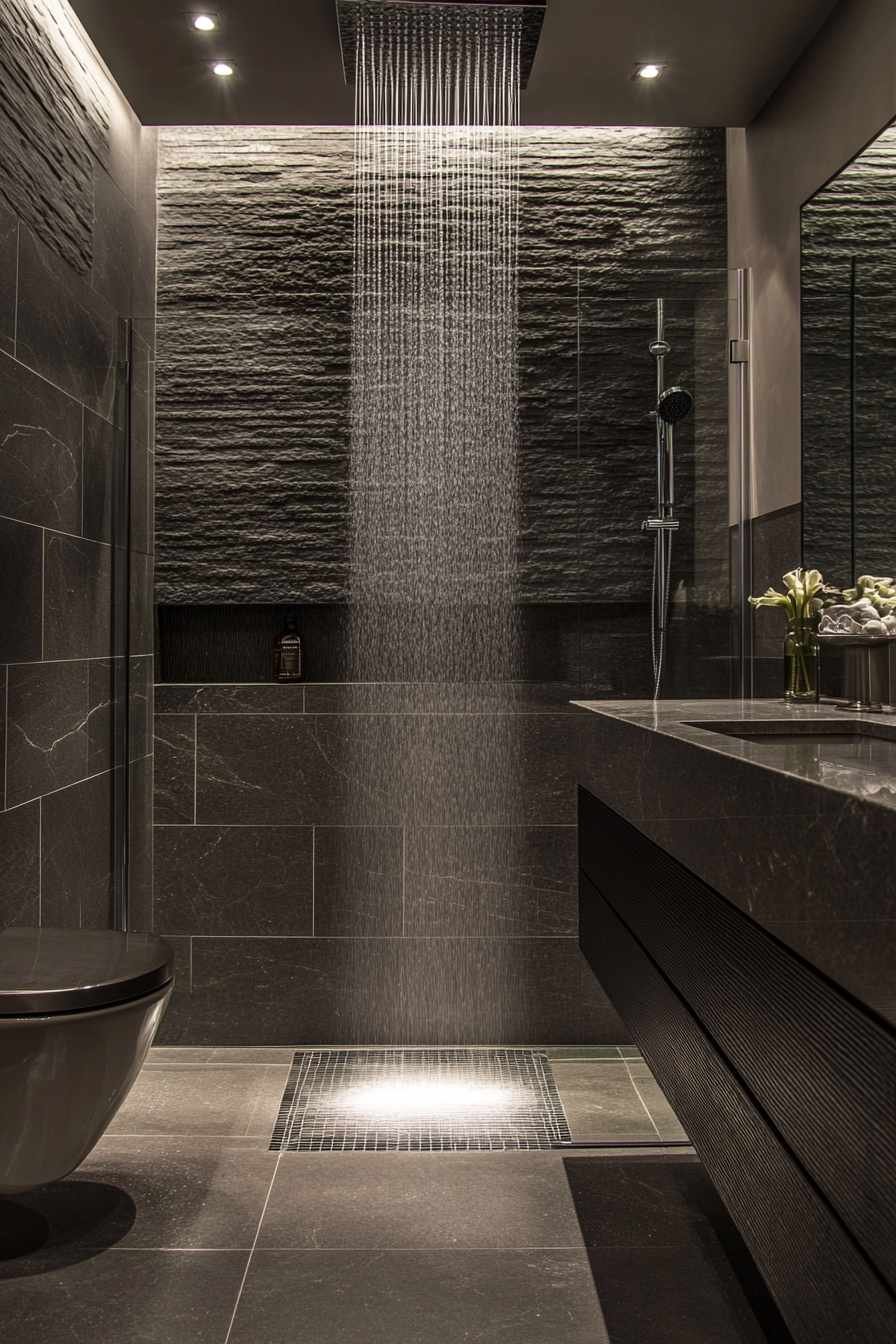
Smart use of patterns and textures
In monochrome design, pattern replaces color as a key point of visual interest. Black-and-white geometric tiles—such as chevrons, diamonds, or hexagons—add rhythm to floors or backsplashes.
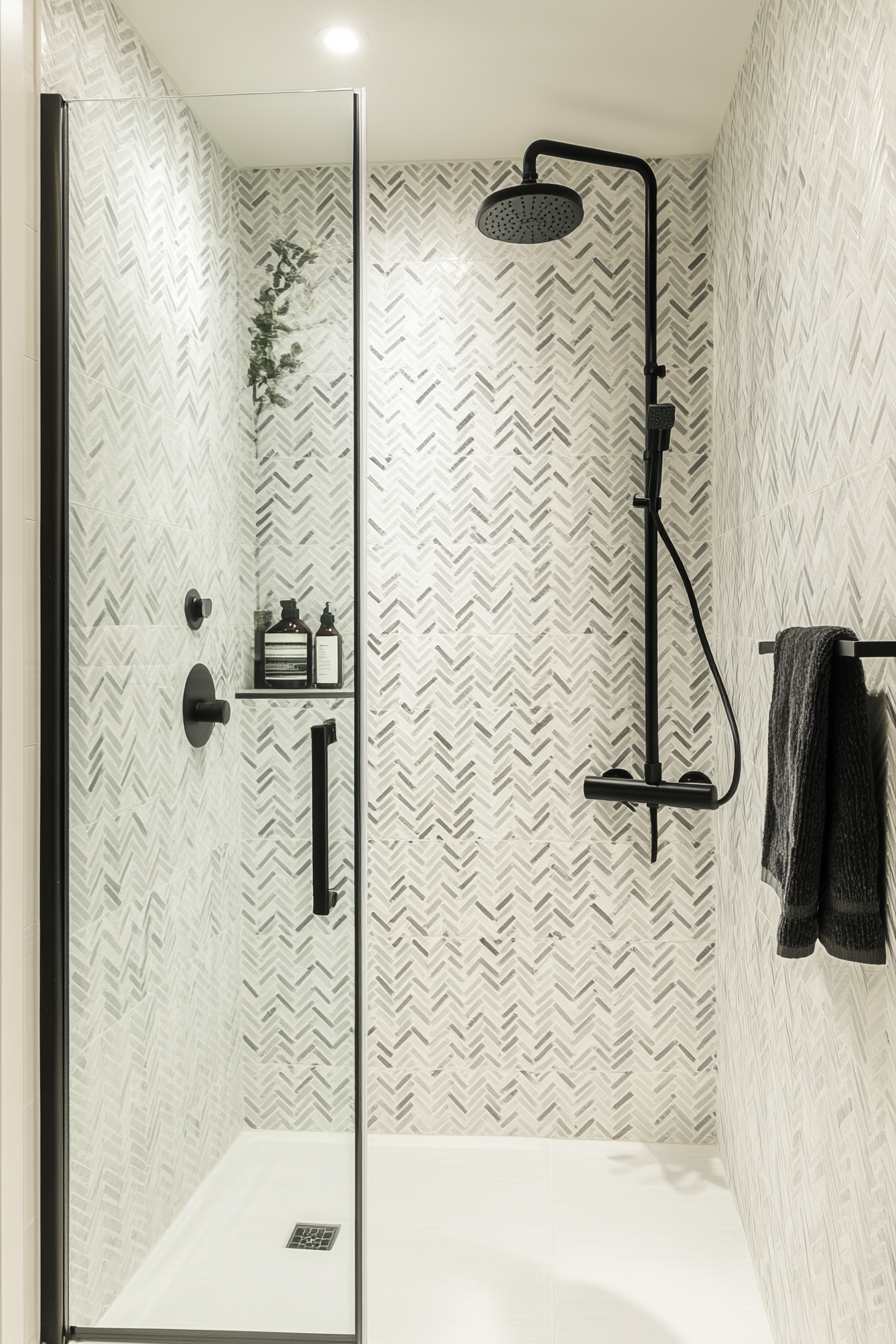
Pair these with matte finishes for a modern aesthetic or go high-gloss for a more glam look. Subway tiles with dark grout add both dimension and function, resisting visible grime while drawing graphic lines across the wall.
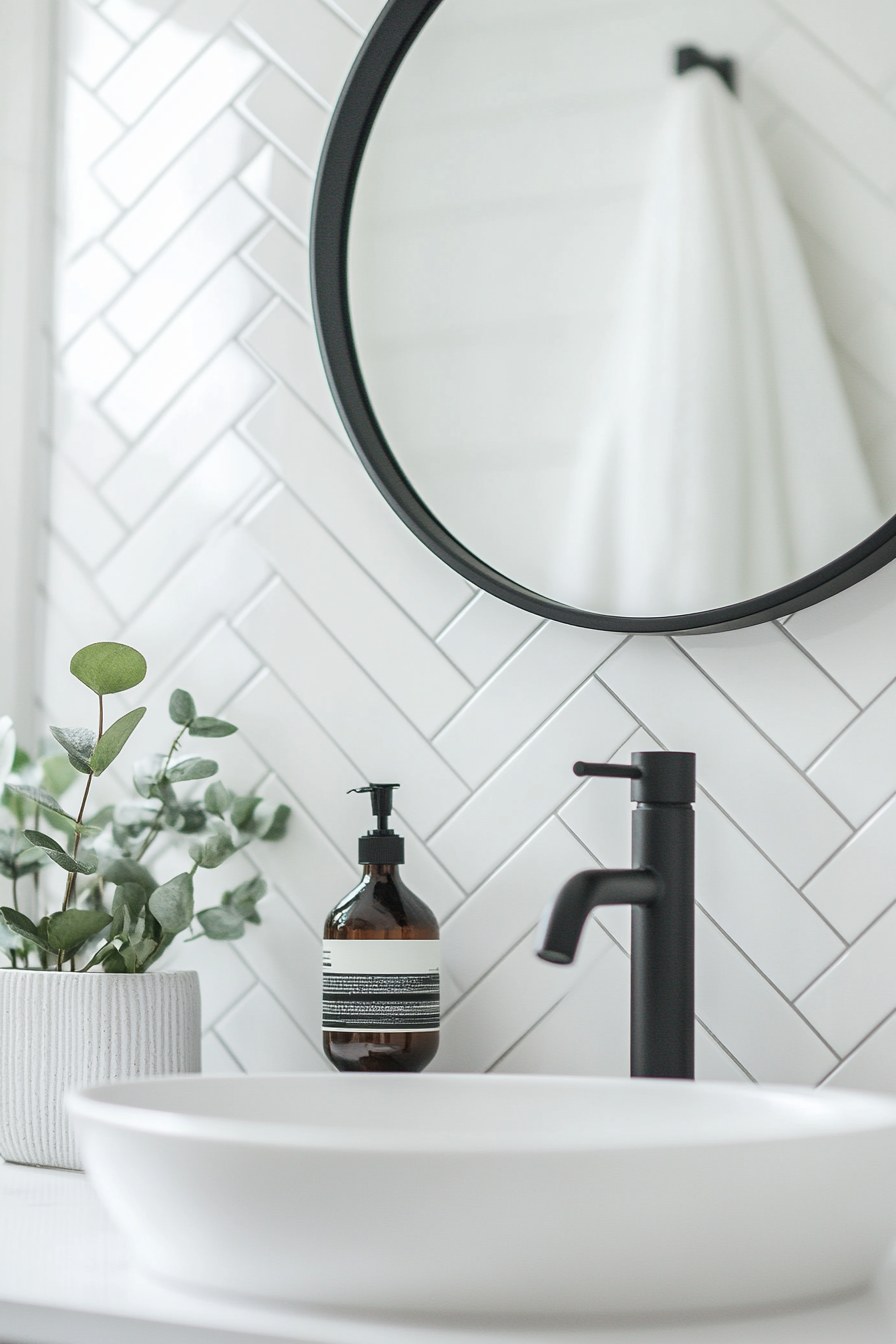
Terrazzo, marble, or textured ceramics in monochrome palettes also bring a tactile, artisanal element that elevates the space.
Flooring that sets the tone
Your floor is the grounding feature of the bathroom and a perfect place for bold pattern play. A black-and-white checkerboard floor feels retro yet modern when paired with sleek fixtures. For a more contemporary look, consider matte black hex tiles with white grout.
Chevron patterns in stone-look porcelain can elongate the room, guiding the eye forward. If you prefer subtlety, try large-format light gray tiles with a sandblasted finish for soft contrast and a spa-like feel.
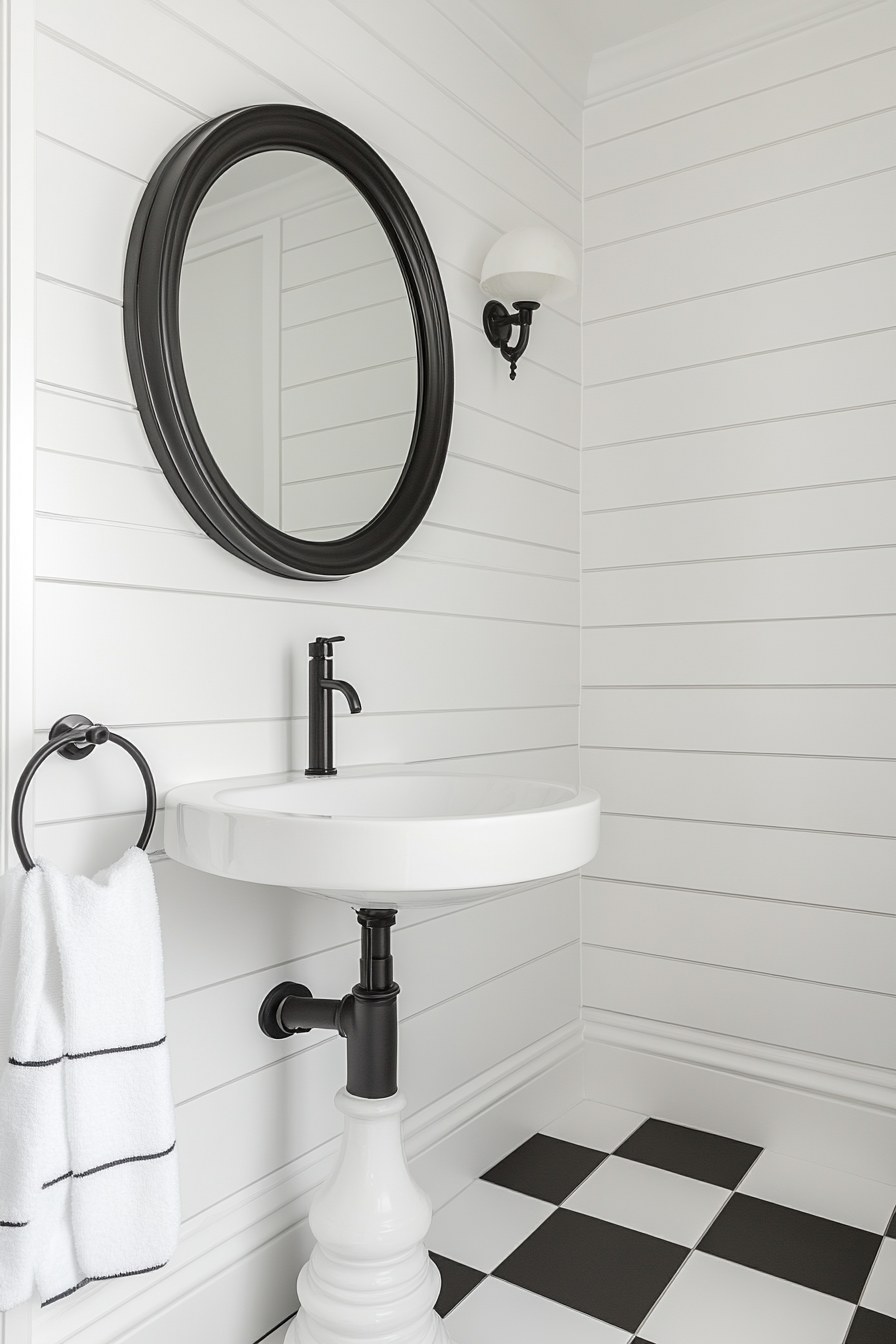
Statement walls in small bathrooms
Even in compact bathrooms, a single feature wall can make a dramatic impression. This could be the wall behind your vanity, inside the shower, or even the ceiling for a dramatic twist.
Black vertical shiplap adds texture and height, while graphic monochrome wallpaper can turn a tiny powder room into a design gem. In tiled showers, using a different texture or scale of tile on the back wall adds depth and sophistication.
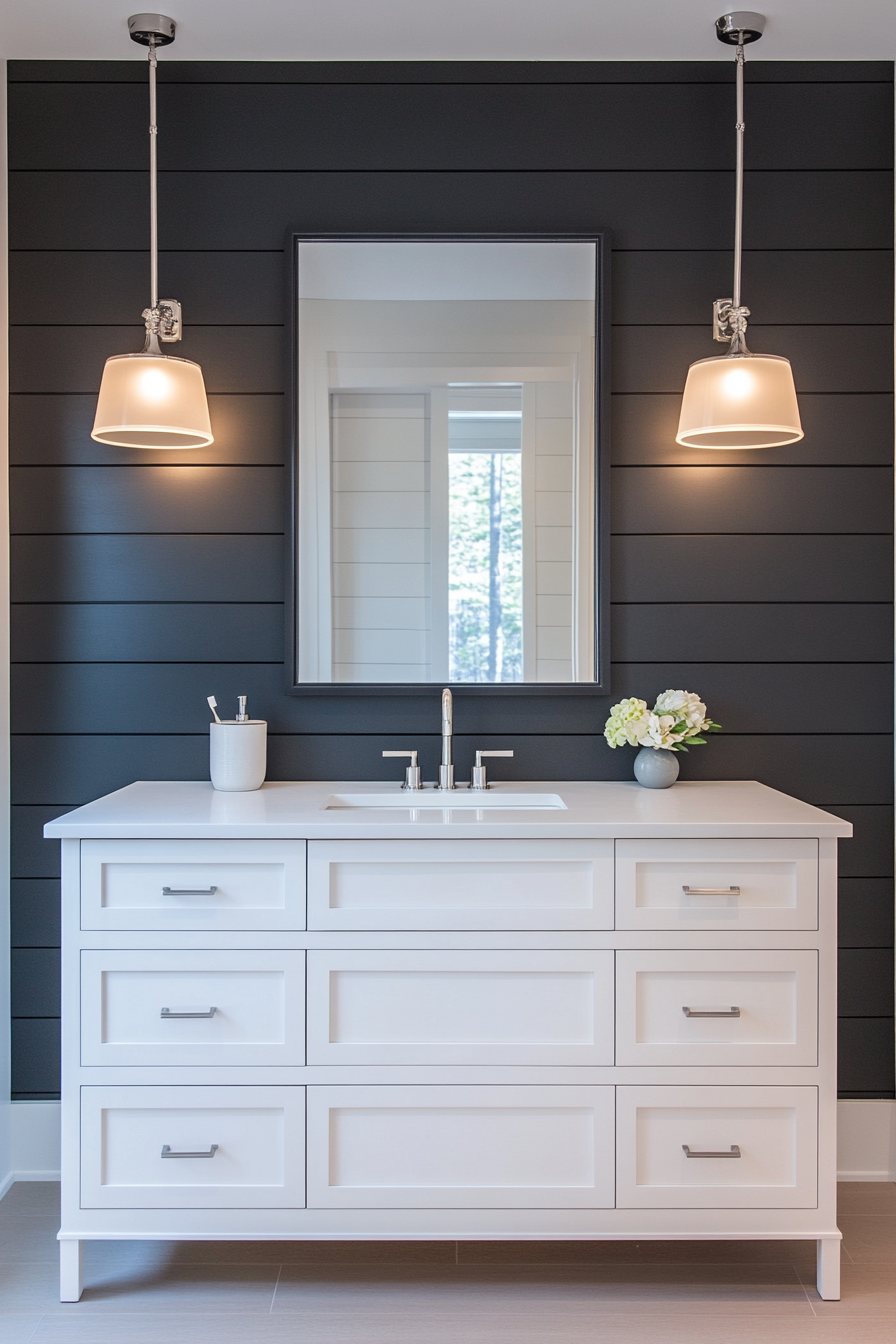
Fixtures that make a monochrome statement
Modern bathroom fixtures come in a wide range of finishes that support the monochrome aesthetic. Matte black faucets, rainfall showerheads, and towel bars are striking and contemporary. Conversely, white fixtures—like pedestal sinks or wall-mounted toilets—feel light and architectural.
Floating vanities in lacquered black or gray maintain floor visibility and contribute to the illusion of more space, while integrated sinks in white quartz or marble keep lines clean and cohesive.
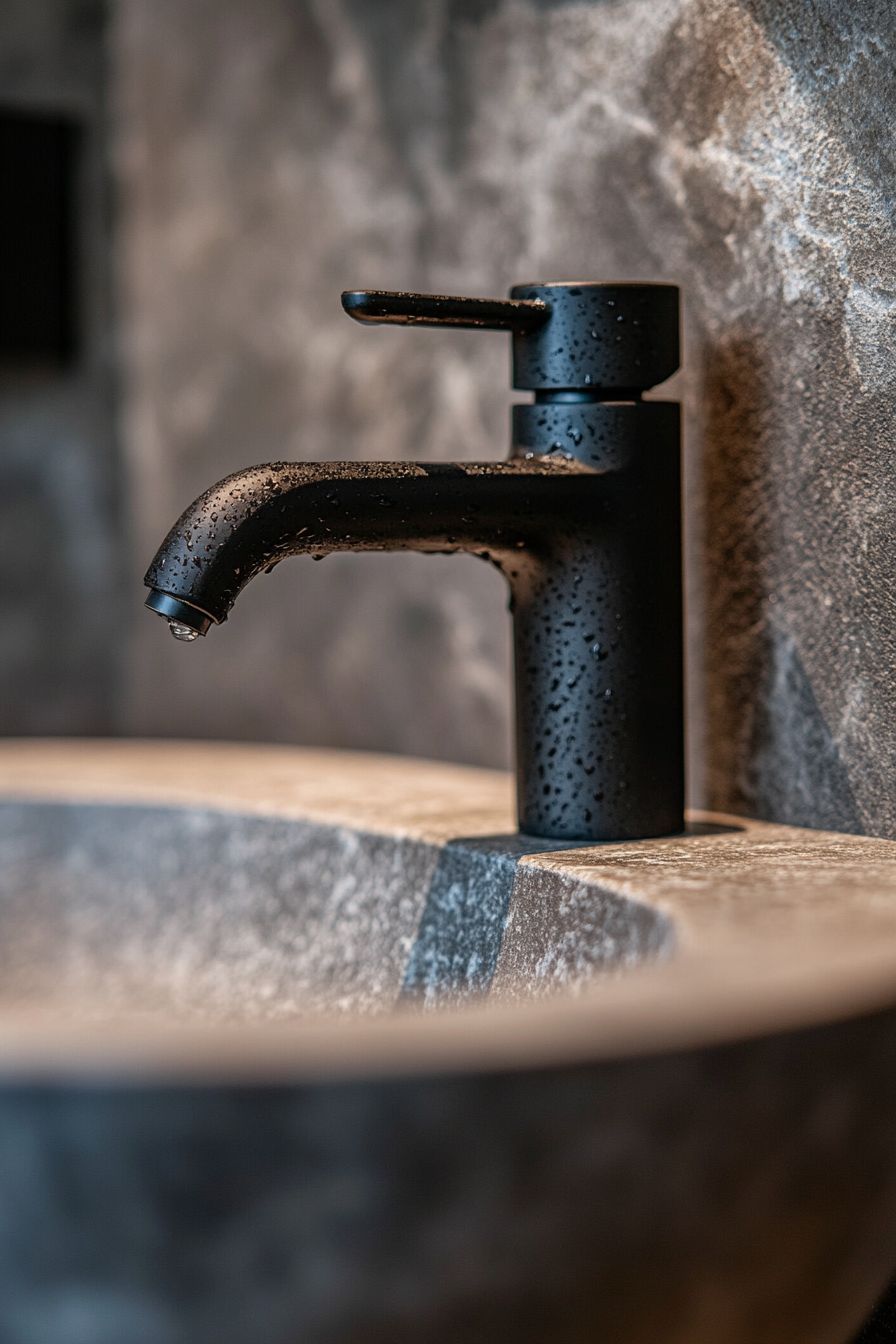
High-impact lighting techniques
In a monochrome space, lighting isn’t just functional—it’s transformational. Wall-mounted sconces with opaque glass or metal shades diffuse light beautifully, reducing harsh shadows that can accentuate the room’s size.
Under-mirror or under-cabinet LED strips create ambient glow without cluttering sightlines. Consider a statement pendant light in matte black or chrome for a sculptural element overhead.

Dimmer switches allow control over mood and visibility, essential in darker monochrome palettes.
Mirrors and reflective surfaces
Strategically placed mirrors amplify light and create visual expansion. Frameless full-wall mirrors add elegance and minimalism, while round black-framed mirrors offer definition and softness.
Consider mirrored cabinets with integrated lighting for form-meets-function elegance. High-gloss tile or glass panels also reflect light, making a dark palette feel luminous rather than oppressive.
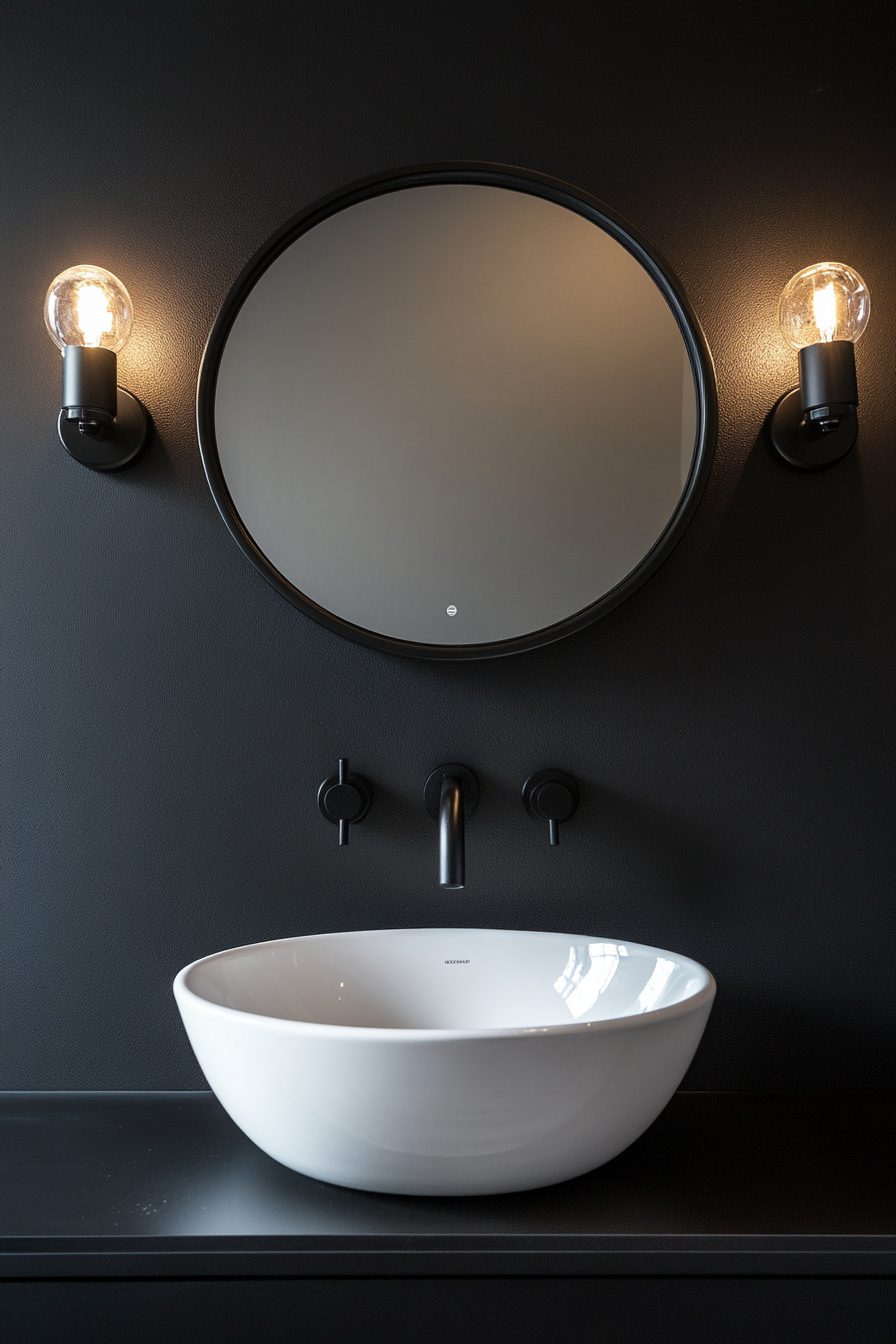
Creative use of storage in monochrome design
Clutter is the enemy of monochrome. Built-in wall niches within the shower, floating shelves in black or white lacquer, and under-sink drawers with soft-close mechanisms all keep the look seamless and practical.
White cabinetry with black hardware—or vice versa—offers subtle contrast without breaking the visual flow. Use containers in ceramic or matte metal to match your theme and maintain order.
Soft furnishings and accessories
Even in monochrome, you can layer softness through textiles. Black and white Turkish towels, charcoal bath rugs with plush pile, and minimalist shower curtains create warmth and tactile interest.
Stick to a strict palette, but explore varying materials: waffle weave, linen, cotton blends, or ribbed finishes. Ceramic soap dispensers, black glass jars, and minimal white trays can accessorize the vanity without creating clutter.
Greenery and organic accents
While monochrome design avoids color, a small splash of green from a plant can create visual relief without disrupting the aesthetic. Snake plants, pothos, and ZZ plants thrive in low-light environments and add vitality to otherwise hard surfaces.
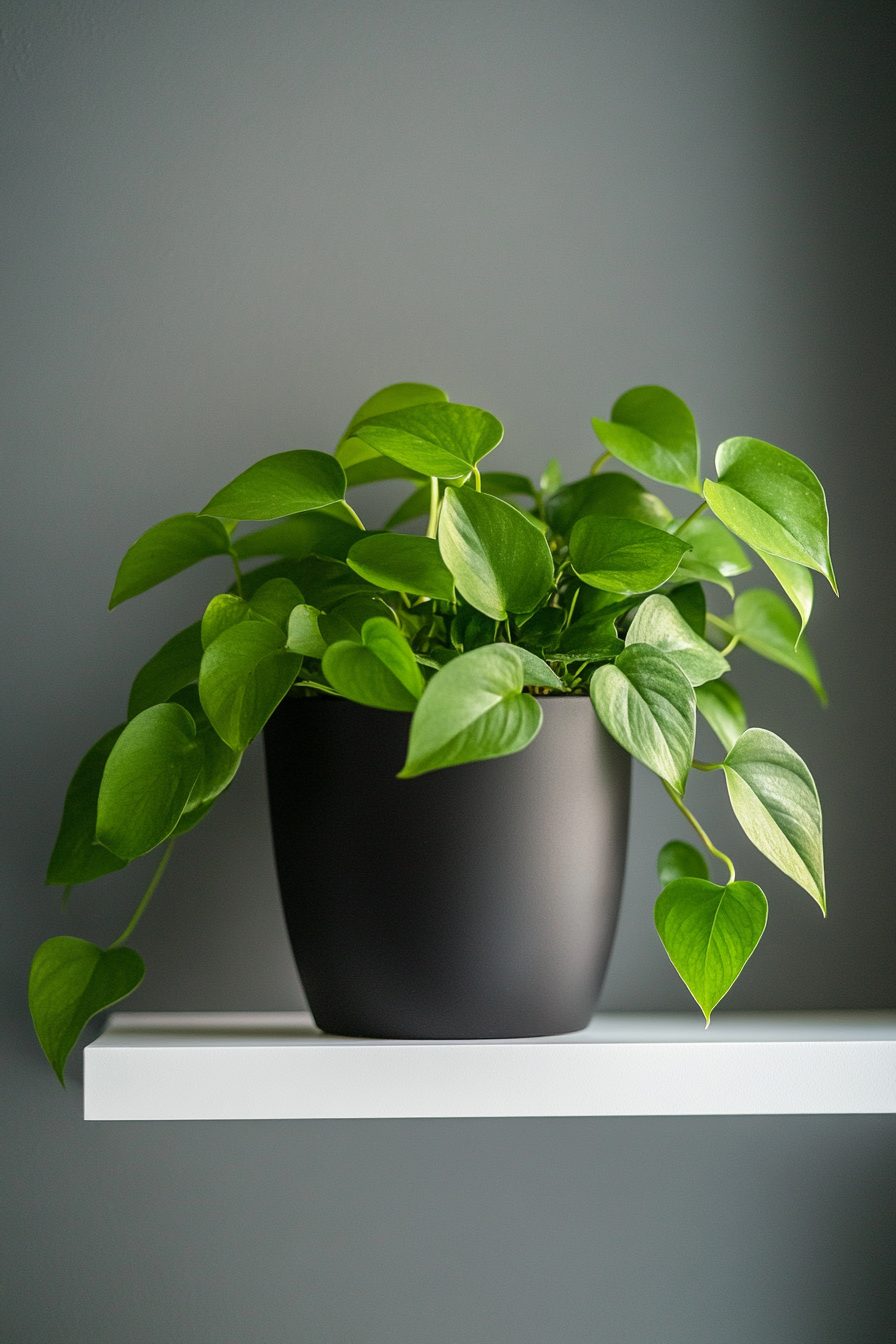
Use monochrome pots—glossy black, matte white, or concrete gray—for consistency. These touches bring life and balance to a space dominated by manufactured materials.
Going minimalist without feeling stark
Minimalist monochrome bathrooms walk a fine line. To avoid feeling clinical, introduce natural elements like wood grain tiles in ash or charcoal, stone-look porcelain, or fluted glass accents.
Limit visible products. Use a small number of high-quality accessories. Edit out excess décor, focusing on clean lines and purposeful design.
Remember, minimalist doesn’t mean empty—it means intentional.
Monochrome for various bathroom styles
The beauty of monochrome is its versatility across design genres:
- Modern: Floating vanities, sharp lines, matte finishes.
- Industrial: Black pipe shelving, concrete-look tiles, Edison bulbs.
- Scandinavian: Light grays, white tiles, minimal wood accents.
- Transitional: Mix of traditional shapes (like pedestal sinks) with modern fixtures in chrome or black.
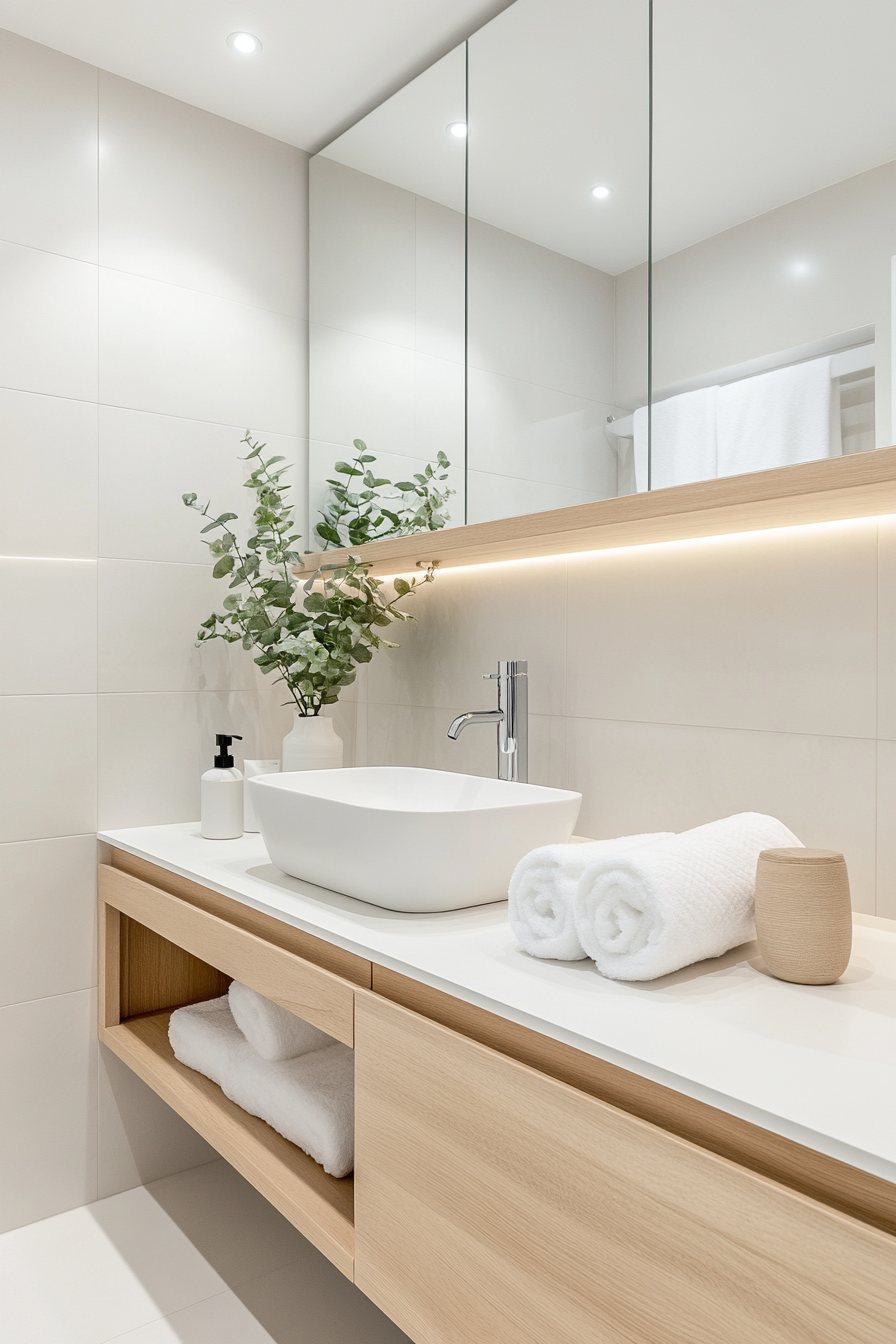
Each style can be adapted with monochrome principles while reflecting your personal taste.
Budget-friendly monochrome upgrades
Monochrome doesn’t require a full remodel. Start small:
- Use peel-and-stick black and white tiles to refresh the floor or backsplash.
- Spray-paint metal fixtures and cabinet hardware black for cohesion.
- Add a matte black framed mirror and swap light fixtures to match.
Painting the ceiling or lower half of the walls black adds instant depth for just the cost of paint.
Small bathroom layout tips for impact
In a small bathroom, layout matters as much as style. Use floating vanities and wall-mounted toilets to increase visible floor space.
Opt for walk-in showers with glass partitions instead of opaque curtains. Recessed niches save storage space. Use vertical cabinets or ladder-style shelving to draw the eye upward.
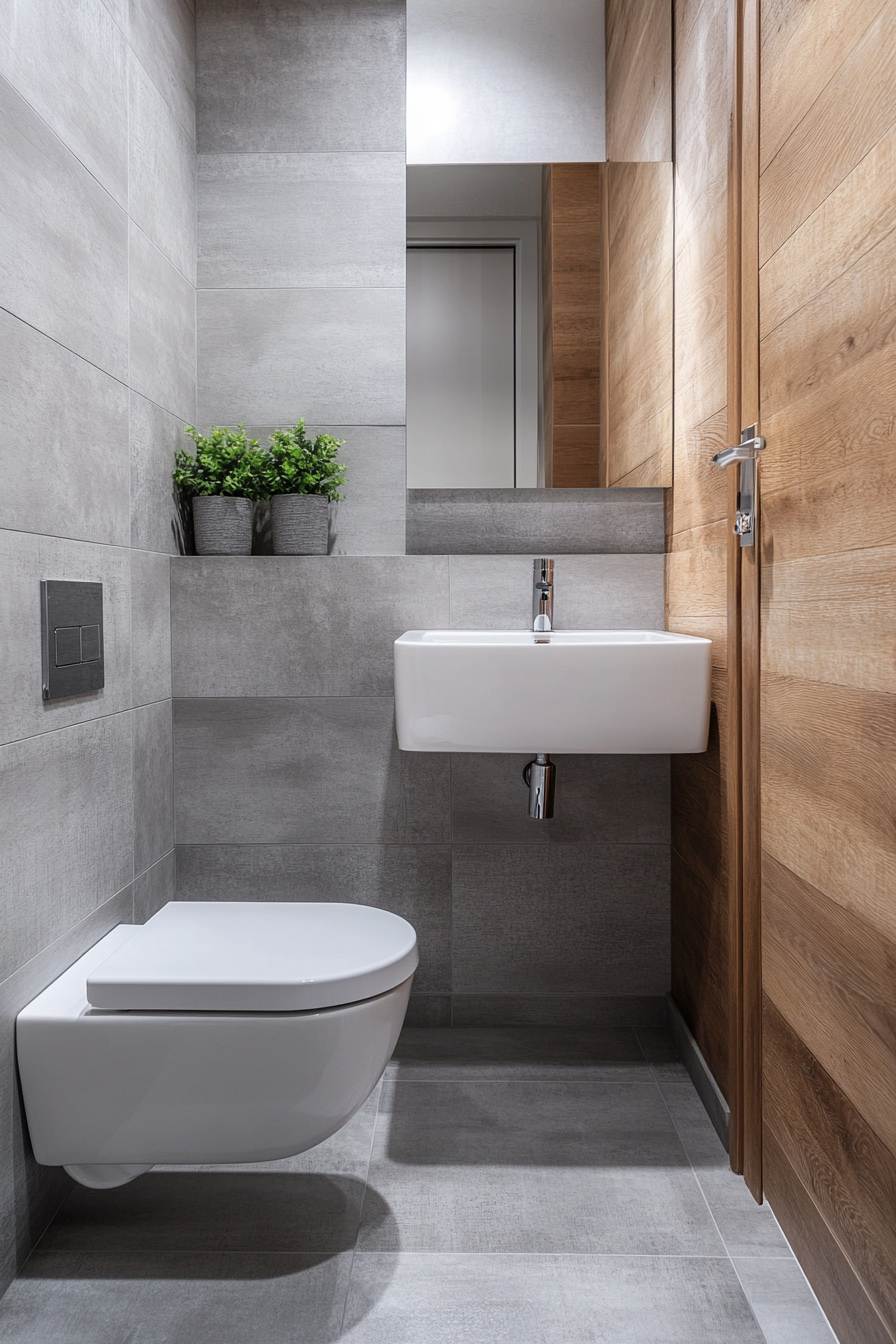
Keep transitions smooth—fewer visual breaks make the space feel larger.
Mistakes to avoid in monochrome bathrooms
- Overusing one tone: A room that’s too white or too black can feel flat. Use subtle tonal variation.
- Neglecting light: A dark monochrome bathroom without adequate lighting feels oppressive.
- Lack of texture: Gloss, matte, rough stone, and polished metal all help prevent monotony.
Monochrome thrives on nuance—balance is everything.
Real-life examples and inspiration
- Urban Spa Retreat: A 45 sq. ft. bathroom in New York with charcoal floor tiles, white subway walls, matte black fixtures, and a floating walnut vanity.
- Minimalist Loft Powder Room: Microcement gray walls, black-framed mirror, vessel sink, and hidden LED strips.
- Scandi-Industrial Hybrid: Light gray walls, black iron accents, white oak cabinetry, and vintage-style lighting.
Each shows how monochrome principles can create a small bathroom with serious style.
Conclusion
Monochrome design turns limitations into style opportunities. Whether you favor bold black contrasts or soft gray gradients, this approach delivers impact, cohesion, and timeless appeal—especially in small bathrooms where every choice matters. Embrace the power of less, focus on form and function, and let your personality shine through restrained elegance.
FAQs
Can a monochrome bathroom still feel warm and inviting?
Yes! Use warm-toned grays, textured materials, wood elements, and layered lighting to keep the space from feeling sterile.
What’s the best way to make a small black bathroom feel bigger?
Use mirrors, under-lighting, glass partitions, and strategic bright accents. Stick to matte finishes and avoid clutter.
Are monochrome bathrooms going out of style?
No. They remain a staple for modern and timeless design. Monochrome styles adapt well to changing trends by updating fixtures and accessories.
Can I mix metals in a monochrome bathroom?
Yes, but do so with intention. Stick to 1–2 metal finishes (e.g., matte black and brushed nickel) and repeat them throughout for consistency.


